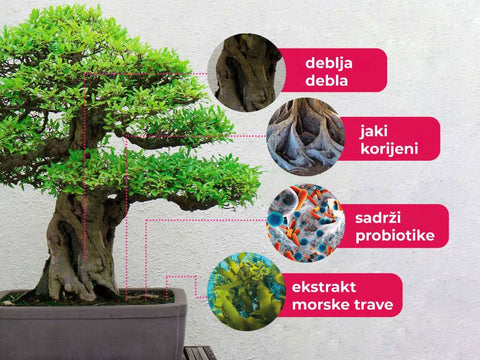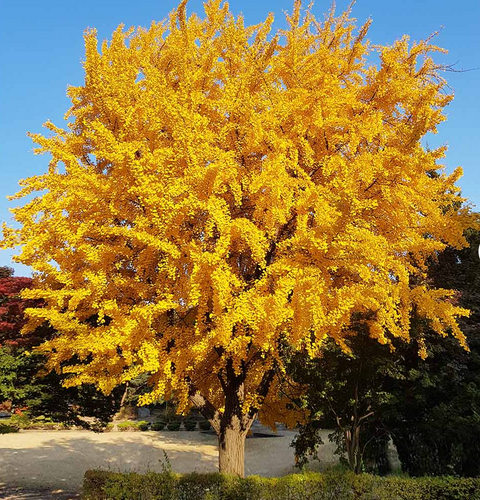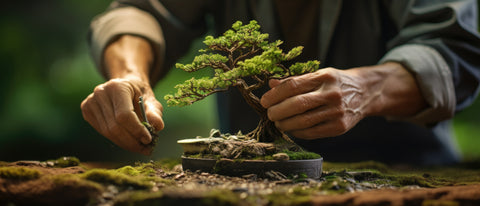Fertilizing plants and bonsai
Fertilizing plants is one of the key gardening practices that allows plants to develop optimally, bloom, produce fruit, and resist diseases and pests. Although plants in nature often survive without human intervention, conditions in containers, jars, and especially in specific plants such as bonsai trees, are significantly different.
🌿 Why do plants need fertilizers?
Plants need various nutrients to grow, which they naturally obtain from the soil. The most important macronutrients are:
-Nitrogen (N) – promotes leaf growth and green color.
-Phosphorus (P) – important for root development, flowering and fruiting.
-Potassium (K) – strengthens plant resistance, regulates water balance, helps with the formation of flowers and fruits.
In addition to these macronutrients, plants also need micronutrients such as iron, magnesium, zinc, manganese and other elements in smaller quantities. In nature, these nutrients are constantly replenished by the decomposition of organic matter, rain, the activity of microorganisms, etc. In jars, however, nutrients are limited and quickly depleted.
As soon as a plant exhausts nutrients from the soil, it begins to show signs of deficiency: yellowing leaves, slow growth, poor flowering, weak roots. That's why we regularly add these nutrients in the form of fertilizer.
🌿 Special features of bonsai trees and their needs
Bonsai trees are not ordinary plants – they are the art of miniaturizing trees that requires a lot of attention, precision and care. Bonsai trees grow in very small containers where the amount of substrate is limited, and therefore the amount of available nutrients. Therefore, fertilization for bonsai is particularly important and requires a careful approach.
🌿 The main reasons why bonsai is fertilized :
-
Limited root space
Bonsai grow in shallow containers where the amount of soil is minimal. In such an environment, nutrients are quickly depleted. If we do not replenish them, the plant cannot survive because it does not have the ability to draw nutrients from a wider area, as it would in nature. -
Frequent substrate replacement
In bonsai care, it is common to replace the substrate every few years, which improves the soil structure and root health. However, the substrates used for bonsai are often sterile (e.g. akadama, lava, pumice), which means they do not contain many nutrients on their own. Fertilizer is therefore a necessary addition. -
Controlled growth
Bonsai must maintain its miniature form, but still remain healthy. With proper fertilization, we can regulate growth – more nitrogen to stimulate growth in the spring, more potassium and phosphorus for flowering and preparation for winter. -
Seasonality and plant development
Like larger plants, bonsai have their own growth cycles – spring is a time of vigorous growth, summer for consolidation, and autumn preparing for dormancy. Fertilization must follow these phases: more nitrogen in spring, less in autumn, but more potassium to strengthen before winter.
🌿 Types of fertilizers for bonsai
Both organic and mineral (chemical) fertilizers can be used for bonsai, but the choice must be careful.
-Organic fertilizers (e.g. fish emulsion, bone meal, compost extracts): act more slowly, but nourish the plant in the long term and stimulate microbiological activity in the substrate.
-Mineral (synthetic) fertilizers : act quickly, but require precise dosing because excessive amounts can damage the roots.
There are also special fertilizers for bonsai with a balanced NPK ratio (e.g. 6-6-6, 10-10-10) or those adapted to specific growth stages.
🌿 How to properly fertilize bonsai?
-
Adaptation to the type of bonsai
Deciduous trees, conifers, flowering plants or fruit trees have different needs. For example, conifers usually need less nitrogen than deciduous trees. -
Correct frequency
We fertilize during the period of active growth (spring–summer), usually every 1–2 weeks with liquid fertilizers, or every 4–6 weeks with organic fertilizers. During the dormant period (winter), most bonsai are not fertilized, except for tropical species that grow year-round. -
Fertilizing after transplanting
After transplanting (when the roots are damaged), it is recommended to wait at least a few weeks before starting fertilizing to allow the roots to recover. -
Combination with proper watering
Fertilizer is always added to moist soil, as dry soil combined with fertilizer can cause root burns.
🌿 Consequences of lack or excess fertilizer
Nutrient deficiencies can cause:
-Pale or yellow leaves
-Poor growth
-Smaller and sparser leaves
-Less resistance to disease
Excessive fertilization can:
-Damage the roots (burns)
-Encourage too rapid growth, which is not desirable for bonsai
-Cause salt accumulation in the substrate
-Cause nutrient imbalance
Fertilizing plants , especially bonsai trees, is not just an additional gardening activity, but a necessary and carefully considered practice without which the plants cannot thrive. While natural plants rely on rich soil and biological processes, bonsai trees are completely dependent on our care. Due to the limited space, artificial substrate, and desired aesthetic appearance, bonsai require regular and proper addition of nutrients.
A successful bonsai is the result of a balance – between growth and growth retention, between nature and art. In this, fertilizer acts as a silent helper that ensures that the mini tree remains healthy, vital and beautiful, even though it is in a small pot, far from its natural environment. If we understand the needs of the plant and fertilize with understanding and feeling, we will be rewarded with a strong and harmonious bonsai that, despite its size, radiates the strength of a century-old tree.



